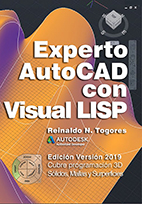The XI Pan American Games were held in Havana, Cuba between 2 and 18 August 1991. The Baraguá Swimming Complex was designed in the studio of architect Antonio Quintana Simonetti. It has an Olympic swimming pool, a short course pool for warming up and events, a pool for athletic recovery and a diving tank.
The Interior Design project was commissioned to our team by the Cultural Assets Fund. The work we carried out included the selection of a series of paintings, sculpture, engraving, photography and ceramics from some of the most outstanding Cuban artists of the moment, among them Flora Fong, Frémez, Gilberto Frómeta, René Azcuy and Tomás Lara that were used in the different spaces. These included four photo murals, twenty etchings and serigraphs, a mural tapestry, 10 paintings on canvas or on paper, and about thirty artistic ceramic items. As part of the project we developed the graphic treatment of ceilings and walls in the tunnel entrance, hallways and stairs.
Once the games were finished all these facilities have suffered from neglect and lack of maintenance leading to the extreme degradation currently manifest. As witness to this state of things we quote from Beatriz Lobaina's post published in 2013 in the Isla al Sur blog:
The Interior Design project was commissioned to our team by the Cultural Assets Fund. The work we carried out included the selection of a series of paintings, sculpture, engraving, photography and ceramics from some of the most outstanding Cuban artists of the moment, among them Flora Fong, Frémez, Gilberto Frómeta, René Azcuy and Tomás Lara that were used in the different spaces. These included four photo murals, twenty etchings and serigraphs, a mural tapestry, 10 paintings on canvas or on paper, and about thirty artistic ceramic items. As part of the project we developed the graphic treatment of ceilings and walls in the tunnel entrance, hallways and stairs.
Once the games were finished all these facilities have suffered from neglect and lack of maintenance leading to the extreme degradation currently manifest. As witness to this state of things we quote from Beatriz Lobaina's post published in 2013 in the Isla al Sur blog:
Notwithstanding the intentions expressed in the article quoted, the restoration of the building was still pending in December 1014. As a contribution to the future restoration of this building we want to contribute, from our personal archive, the original plans of our Interior Design project, as well as some of the photos we took in the days before the facility's inauguration.At a time when Cuban sport needs protagonism, the East Havana facilities, built for the 1991 Pan American Games in Havana, display a critical state of disrepair.
“When I stop to watch the site where, since 1994, I spent most of the day, I feel a squeeze in the chest; but I have faith I'll will plunge again into the pools", says polo player Ernesto Cisneros.
Of all the venues then created, this center is today in the worst condition. The causes? Late in December a part of the roof structure (catwalk) fell so the disciplines that trained here (synchronized swimming, water polo and diving) had to be relocated. Paradoxes of destiny, because a few days before this incident the IV Cerro Pelado Games events had taken place successfully.
To solve an additional inconvenience, within the boiler room three exchangers were started -one per pool- in order to recirculate and heat the water. Indeed, the consumption of 65-70 liters of oil per hour from each of these devices is considerable, but... more troublesome for the athletes is plunging into 15 degrees Celsius pool in December.
Returning to the roof, rust and a fallen catwalk sounded the alarm for the sports authorities to include, with the red ink of priority, Baraguá's rescue effort in the 2013 investment plan.
“"The galvanized zinc roof began to be dismantled on March 11 by a Julio Antonio Mella contingent's brigade of and is scheduled for completion in November; it will not be until January 2014 that the internal repair of the center will be carried out”, states Jose Valdes Silva, the institution's director. “Although we are in a phase of execution, once or twice a week we turn on the machines to keep them in good condition and the swimming pools remain full and chlorified”, he specifies.
Marcos Gousson, a neighbor for more than three decades, affirms: “It is hard to imagine that the scenario that hosted such a renowned tournament does not resemble what it was anymore. We know that they are working towards its rescue, seeing it ready is the dream of the people around here”.





